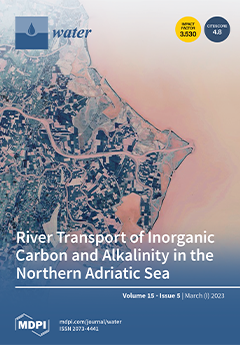The combination of the chemical coagulation-assisted electrocoagulation (CC-EC) process with a solar photovoltaic energy source has attracted increasing attention for the efficient removal of chemical oxygen demand (COD) from pharmaceutical wastewater. In this paper, the CC-EC process has been utilized as an alternative
[...] Read more.
The combination of the chemical coagulation-assisted electrocoagulation (CC-EC) process with a solar photovoltaic energy source has attracted increasing attention for the efficient removal of chemical oxygen demand (COD) from pharmaceutical wastewater. In this paper, the CC-EC process has been utilized as an alternative to conventional chemical processes for the treatment of pharmaceutical wastewater. The effects of the various operating parameters, such as coagulant dosage, coagulant type, number of electrodes, the distance between electrodes, electrode configuration, operating time, and current density, on COD removal efficiency were investigated. The results indicated that the optimum conditions were achieved at 500 mg/L of alum dosage, 3.105 mA/cm
2 of current density, six electrodes with a distance of 4 cm between electrodes, and the MP-S electrode configuration, where the operating cost of conventional energy was 0.283 $/m
3. Indeed, by using the CC process alone, the COD removal efficiency was 26% and 61.5% at the optimal dosages of 750 mg/L of NaOH and 500 mg/L of alum, respectively. In the CC-EC treatment, the removal efficiencies of COD were 88.7, 92.9, 94.4, and 89.4% using six electrodes, 2 cm of distance between electrodes, MP-S electrode configuration, and 20 min with 1.553 mA/cm
2 of current density, respectively. The removal efficiencies of COD achieved through CC, EC, and CC-EC processes were 61.5, 85.4, and 94.4%, respectively.
Full article





